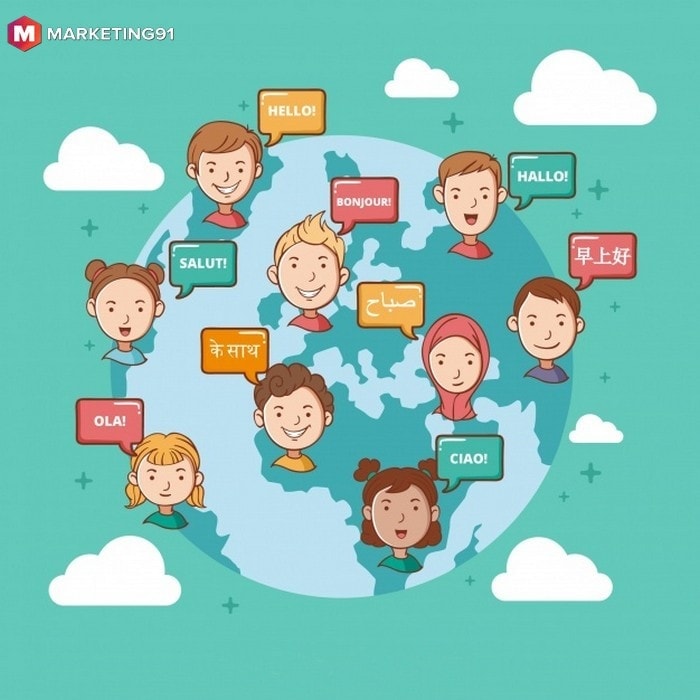A strategics alliance can be defined as an agreement between two or more companies to achieve common business goals by sharing their strengths and resources. However, the parties involved in a strategics alliance remain independent in their business operations.
It is common for companies to come together to work for a mutually beneficial project. The agreement of working together is referred to as a strategics alliance. Companies involved in the strategics alliance share their resources for the same purpose.
A strategics alliance is a popular way of doing business in the modern business world. This is happening because of globalization, rapid change in technology, etc. as a result of which the business environment has become complex and sheer competitive.
Many times, a strategics alliance is confused with joint venture by people. However, there are many differences between a strategics alliance and joint venture.
One basic difference between a joint venture and strategics alliance is that in joint venture all the companies involved set up a separate legal entity with new identity whereas in strategic alliance companies involved in the agreement work as a separate individual entity.
Even though the strategic alliance is an informal alliance between the companies involved, but the responsibilities and work are clearly defined for each party involved.
The duration of the strategic alliance is decided based on the goals of the alliance and the gains and needs of the strategic partners. With the help of strategic alliance, companies grow their business at a much faster pace than they would not have grown working alone.
Companies can learn about new business techniques and methods by the alliance with other companies and can use that knowledge to grow their business and to enter into new market space.
A strategic alliance is preferred by many businesses over joint venture these days as because of its flexibility to do business. Companies involved in the strategic alliance are not required to merge their capital and can work independently from one another.
Table of Contents
Common Reasons for the Strategic Alliances venture:
1) Slow Cycle of the business
When the business cycle is slow in nature owing to the various external and internal factors, the company’s competitive advantage is relatively shielded for a relatively long time period. Even the company doesn’t come up with the new and latest offerings for the target market.
In this case, Strategic Alliances can be formed to explore the new and restricted markets and gain stability in the market by sharing and competencies through the alliance.
2) Standard Cycle of the Business
During the standard cycle of the business, the company launches the new line of products every few years and in regular intervals but may or may not be able to maintain its leading and top as a market leader.
In this case scenario, Strategic Alliances as formulated to gain higher market share, gain access to the complementary resources, generate economies of scale, beat other competitive companies, and pool resources for the projects that require a large number of funds and capital investments.
3) Fast Cycle of the Business
In the fast cycle of the business, the company needs to come up with an offer the new range of products on a constant and continuous basis to survive in the market. The company’s competitive advantages are not protected.
In this case scenario, Strategic Alliances are formed in order to speed up with the development of new products, overcome the factor of uncertainty, share the expenses of research and development, and align the process of market penetration.
Let us learn more about the strategic alliance in the following sections.
Types of Strategic alliances
There are four types of strategic alliance. Let us learn about them one by one.
#1. Procompetitive Alliance:
This type of strategic alliance works based on low interaction and low conflicts. In this type of strategic alliance, companies involved in the alliance have minimal involvement, and they don’t merge their capital.
An example of a procompetitive strategic alliances can be seen in businesses between the distributors or suppliers and manufacturers.
These companies work with each other without merging their capital in the business. This type of strategic alliances takes advantage of vertical integration.
#2. Noncompetitive Alliance:
This type of strategic alliances results in high interaction and low conflicts. This type of strategic alliances takes place among the companies which are part of the same industry but does not consider themselves direct competitors.
This is because the operations of these companies are quite distinctive from one another. This type of alliance takes place between companies whose businesses are same but operate in different geographical areas.
#3. Competitive Alliance:
This type of strategic alliances works on the principle of high interaction and high conflicts. Companies which are direct competitors of each other come together to form a competitive strategic alliances.
Being direct competitors to each other, and because of the high interaction, there is a high risk of conflicts between the companies involved.
This type of strategic alliances takes place between the companies dealing in the same industry but in different countries. Usually, companies get in a competitive alliance with the local companies to establish their business in a new country.
#4. Precompetitive Alliance:
This type of strategic alliances results in low interaction and high conflicts. This type of strategic alliances is common between two companies from two completely industries.
Precompetitive alliance takes place when two companies work together to develop a new product or to develop new technology.
The best example to explain precompetitive strategic alliances is the alliance between an advertising company and a company using its services to develop its products.
Examples of Strategic Alliances
#1. Strategic Partnerships between Spotify and Uber:
The alliance between Spotify and Uber is an example of a strategic alliances between two companies. These two companies, through this alliance, increasing their customer base as they offer uber riders to take control of the stereo.
In this way, both companies are getting an edge over their competitors. Customers of Spotify can play their favorite playlist while riding in the Uber ride by getting the premium package of Spotify.
#2. Apple Pay and Master Card:
When Apple Inc. decided to get into digital payment business. It became a big competitor to all existing companies in this field.
Rather than getting into the competition, the second-largest digital payment company “Master Card” decided to get into an alliance with the Apple Inc. in this way, both companies getting the benefit of the alliance.
Master Card become the first company to provide Apple Pay’s services, and Apple Pay got the benefit of the Master Card’s reputation.
#3. Google and Luxottica:
Luxottica is a leading luxury and sports eyewear company, and Google is an international company which provides internet-based services and products. There is no way that one can think of two such different companies getting into a business alliance with each other.
But these two companies get into an alliance to set an example in the market. With each other’s alliance companies are both companies expanded their business by combining technology with luxury.
Advantages of a strategic alliance
#1. Speed up the entry into a new market:
A strategic alliances is an effective way to enter a new market. Companies can easily reach the customers and can avoid initial hardships of new business by getting into alliance with already existing companies in the market.
#2. Enhance sales:
Companies can increase their sales and expand their business by getting into alliance with other companies which otherwise is very difficult for companies.
#3. Learn new skills and technology:
Companies can learn and obtain skills and technology of other company to enhance their own business.
#4. Divided fixed costs and resources:
When companies get into an alliance, they work for a common goal by dividing fixed costs and resources required for the business.
#5. Innovative products and services:
When two companies from completely two industries come together, they develop innovative products which are beneficial for both companies and help them to enhance their profits.
#6. Enhanced distribution channels:
Companies share their resources when they get into business alliance this allows companies to establish business relationships with new distribution channels and in this way, they can increase the reachability and availability of their products and services.
#7. Easy to get into the international market:
Usually, it is a complex and difficult process for a company to enter into the international market. A strategic alliances between two international companies make it easy for foreign companies to establish their business.
With such an alliance, both companies take advantage of and boost their business.
#8. Builds the image of the brand:
Strategic alliances with leading companies improves the image of a company in the market. Customers trust the brand if they know about the association of a brand with the brand that they already know.
Here is a video by Marketing91 on Strategic Alliance.
Disadvantages of a strategic alliance
#1. Poor Management of the business alliances:
In a strategic alliances, both companies are responsible for their part and have no responsibility for other’s business activities, which results in poor management over the business alliance.
#2. Poor Communication:
There are chances that companies might have poor communication because of the lack of bonding between the involved companies. Poor communication can result in poor decisions and loss of the company’s credibility and business in the market.
#3. Benefits are unequal:
It is not necessary that companies which are involved in the alliance get equal benefits. Sometimes one company gets more benefits than the other company.
There are chances that one business does not hold up their end of the deal honestly, which results in profit loss for other company.
#4. The risk to reputation:
There is always a certain percentage of risk of failure of a company no matter how much you prepare and in strategic alliances, the risk of failure increases as the reputation of your business is also influenced by the actions of the alliance company.
If they fail in their business dealings in some way, it also impacts the reputation and profit of your company.
#5. Barriers in work culture and language:
This type of problem takes place when two companies from different nationalities come together to make a strategic alliances. Different companies have different work culture, and the difference between the work culture of different companies is huge when they are from different nations.
This causes conflicts between the employees of the companies and between the management. In addition to this, language is another barrier that makes strategic alliance ineffective.
Due to language barrier employees of alliance companies find it hard to communicate with one another and to convey what they want to convey effectively. Because of this reason, a strategic alliances is opposed by employees.
#6. Risks of conflicts:
The risk of conflicts increases when two companies of different work culture come together to work on a project. Most of the times, companies work hard to sort out all the conflicts that might take place in future and take precautionary actions.
But a problem arises when something unexpected happens and cause conflicts among the employees of the companies. This can result in the setbacks in the alliance.
#7. Vulnerability:
Getting into a strategic alliance, you give authority to your partner to get a peek into your internal business procedure. This puts you in a vulnerable situation.
For example, if you partner ha access to your computers and data they can steal valuable information and can use it against you or they can steal your human resource too by offering better salaries to your talented employees they can lure them into joining their businesses.
Therefore, it is important for companies to stay alert and don’t disclose everything to their alliance partner.
#8. Legal issues:
Lead to legal issues which can damage the image of a company even when they are not at fault. For example, both partners involved in the strategic alliance will be responsible when one partner deliver the wrong product.
Both partners will be held liable in a lawsuit. There are chances that you get into an alliance with a dishonest partner, and you will end up entangled with legal issues rather than making a profit from the alliance.
The risks involved in Strategic Alliances:
- There can be differences between both the parties on the processes and operations of the business activities even after the arrangement is clear and crisp for both the organizations.
- If there is a term in the agreement of the Strategic Alliance that the parties need to inform each other of their proprietary information that it requires a high level of trust between both the entities.
- The parties may become mutually dependent on each other in case of the long-term Strategic Alliances.
- Partners may misrepresent or lie about their competencies or other crucial factors.
- One party may be able to stand to the commitment of resources and capabilities to the other party involved.
- In the alliance, one of the parties may commit heavily whilst the other may not be that serious about the accomplishment of the common goals and objectives.
- It can be the case that the partners may fail to utilize their complementary resources in an effective manner.
Liked this post? Check out the complete series on Strategy







I have a question
What are the possible risks of the alliance ? How can they be overcome/minimised?
I have a question
What are the possible risks of the alliance ? How can they be overcome/minimised?
What is the different between Alliance International and strategic Alliance